Cyclamen is a herbaceous flowering crop from the Primrose family, numbering about five dozen different species in its genus. Under natural conditions, perennial plants can be found in Asia Minor, as well as in Central and Mediterranean Europe.
|
Each variety of cyclamen has its own flowering period, but most often this occurs in winter or spring. |
At home, caring for cyclamen is quite simple; it does not require special knowledge and a lot of free time. With good care and suitable conditions, the flower will give its gorgeous blooms for many years.
A feature of the flowering perennial is its juice, which contains toxic substances. Seeds and roots are considered the most poisonous; they can significantly harm human health.
| Content:
|
And although cyclamen is known in folk medicine as a medicinal plant, it is necessary to use its healing properties only after consultation with your doctor.
Expert recommendations
To grow cyclamen at home, it is recommended to choose a variety suitable for this, since not all plants are ready to fully develop in a hot room. Many of them require cool weather to begin flowering. Among the numerous selection achievements, you can find the most unpretentious specimens.
Growing conditions
Lighting
When choosing a place for a flower, you must remember that north-facing windows are not suitable for it due to insufficient lighting. Window sills on the east and west sides would be preferable. If the apartment has only a window facing south, then it is recommended to place the plant not on the window sill itself, but next to it. And so that direct rays at midday do not leave burns on the leaves, it is necessary to use light shading.
Temperature
The favorable temperature range for a flowering crop is from twenty to twenty-five degrees in the warm season and from ten to fourteen in the winter.In such conditions, cyclamen fully develops and blooms luxuriantly.
|
For watering and spraying, you must use only purified or settled water, or rainwater. |
Air humidity
Indoor cyclamen requires a high level of indoor humidity. To maintain this level, the plant is systematically sprayed with a fine sprayer, but only before the budding period begins. In the future, it is recommended to use another method of moisturizing.
The container with the flower is placed in a tray with a small amount of water, filled with pebbles or abundantly moistened peat. The bottom should be above the water level.
Growing cyclamen from seeds
Collection of seed material
To obtain seed material from your “pet” it is necessary to carry out artificial pollination. To do this you need a small brush or cotton swab. With its help, pollen is transferred from inflorescence to inflorescence, and, if there are several plants, from one to another. For greater efficiency, this procedure is repeated several times in the morning, in sunny weather.
|
It is better to use freshly harvested seeds for sowing. For dried seeds, the germination rate is significantly reduced. |
When purchasing seed, you need to pay attention to the expiration date and harvest date.
Sowing time
The favorable period for sowing seeds is the end of February or the beginning of March, but with artificial lighting, plants can be planted at any time of the year.
Preparing seeds and soil
Preparatory work begins with seed rejection. To do this, they are immersed in a container with a five percent sugar solution and left for twenty to thirty minutes.All floating specimens can be thrown away; they are not suitable for planting, and those that have sunk to the bottom can be soaked in a solution based on the Zircon preparation.
The soil mixture is prepared from equal parts of peat and coarse sand or peat with vermiculite.
Features of sowing seeds and caring for seedlings
The planting containers are filled with the prepared substrate, the surface is leveled, moistened with a fine sprayer, the seeds are evenly distributed and sprinkled with the same soil composition to a thickness of about one centimeter. The container with the crops is covered with an opaque film and left in a warm room with a temperature of eighteen to twenty degrees.
|
Care before emergence consists of systematic ventilation and moistening of the soil. |
After about a month and a half, the first seedlings appear. The film cover is immediately removed, and the containers with the plantings are transferred to a cool room with a temperature of fifteen to seventeen degrees, with good lighting and protection from direct sun.
After the appearance of two to three full leaves of the plant, it is necessary to dive into individual pots. A substrate consisting of four parts leaf soil, two parts peat and one part sand is filled into small containers or general planting containers. The seedlings are planted together with a clod of earth, completely covering the nodules with soil. A week later, young plants are fed with fertilizer diluted twice for flowering indoor crops.
Seedlings are transplanted into individual flower pots in April - May. The first flowering occurs after approximately fifteen months.
Cyclamen care
When and how to water
Irrigation water is preliminarily settled for twenty-four hours; it should be soft and warm (about a couple of degrees below room temperature).
On a note! To protect the tuber, core and buds from moisture, it is recommended to use bottom watering.
The flower prefers abundant watering throughout the entire flowering period, after which the frequency of watering and the volume of irrigation water is reduced.
The soil in the pot should not be overdried or waterlogged, and liquid should not stagnate. Two to three hours after watering, it is very important to remove excess water from the pan.
After all the leaves dry out and the tuber is exposed, water procedures become very rare and minimal in volume.
Feeding and fertilizers
Complex mineral fertilizers and organic fertilizers are applied regularly from the moment the first leaf blades appear and before flowering begins. It is not necessary to feed the plants after the flowers appear.
Important! Excessive application of nitrogen-containing fertilizers leads to the development of root rot and rotting of tubers.
Care during the rest period
The beginning of the dormant period can be determined by the drying and dying of cyclamen foliage. With the appearance of these signs, it is necessary to move on to a gradual adjustment of the irrigation regime. The frequency and abundance of watering is gradually reduced. Containers with indoor flowers are transferred to a balcony or loggia (without direct sunlight). If this is not possible, then the room with cyclamen must be regularly ventilated.
At the end of summer or early autumn, the plant is returned to a room with good lighting and the volume of watering is increased step by step.
Care after flowering
Under good conditions, indoor cyclamen pleases with its lush and abundant flowering for ten to fifteen years in a row.Every year one bush produces about seven dozen flowers. To maintain decorativeness, it is necessary to carefully pinch off each wilted flower along with the peduncle. It is recommended to sprinkle the rupture site with crushed charcoal or activated carbon.
Transplant technology
Every year at the end of summer or in the first autumn days, when the first leaves begin to appear from the tuber, cyclamen must be replanted. The new container should be two to three centimeters wider than the previous one, and the substrate should have minimal acidity, loose and light.
You can prepare it yourself from one part of rotted humus, coarse sand, peat and two parts of leaf soil. Or make a mixture of four parts leaf soil, two parts humus soil and one part river sand. Before use, the substrate is calcined in the oven or spilled with a manganese solution.
|
The bush is removed from the soil, the root part is cleaned and washed, rotten roots are cut off, and then the tuber is planted in a new pot. |
The bottom of the pot is covered with a drainage layer of expanded clay, and then the soil mixture is poured.
The plant is placed in the center, the roots are straightened, and sprinkled with soil so that the tuber peeks out a little. A small part of it should remain on the surface, this will contribute to better flowering.
Possible diseases and pests
Possible pests that may appear on the plant are grape weevil, thrips, aphids and cyclamen mite. Signs of their presence are the appearance of small foliage, irregularly shaped leaf blades, curvature of the flower stem, fragility and death of shoots, and wilting of inflorescences.To destroy harmful insects, they are treated with insecticides - “Aktara”, “Commander”, “Aktellik”, “Akarin”.
If the flower is not properly cared for, various diseases develop or problems appear with the appearance of the plants.
- In a poorly ventilated room with a cool temperature, cyclamens are affected by gray rot.
- When watering with hard, unsettled water, the leaf blades turn yellow.
- With excessively abundant watering, flower stalks and petioles rot.
- In the absence or poor quality of drainage, the tubers rot.
- When the air is dry and the temperature is high, the leaves fall off.
Types and varieties of cyclamen with photos
Numerous species and varieties, among which there are deciduous and evergreen specimens, do not allow you to choose just one plant. Each of them has its own characteristics and advantages over other colors. A brief description of the most common varieties will help you decide and find your cyclamen for home growing.
Persian (Cyclamen persicum)
|
This species consists of a small tuber with a diameter of about fifteen centimeters with one growing point, unusually shaped leaves (heart-shaped) with a light pattern on the surface and flowers in white, pink, red and purple shades. |
The period of growing season and abundant flowering lasts about four months, after which the plant is in a frozen state (does not wither or grow). The average height of the bush is about thirty centimeters.
Many hybrids of Persian cyclamen have been developed, which are distinguished by larger inflorescences and a longer flowering period. Some varieties shed their leaves in the summer season.
|
In warm climates (for example, in the northern part of Italy), cyclamen not only winter quietly in the open air, but also give their charming blooms. |
This species is called universal due to its growing method. It can be an indoor plant or an outdoor crop.
Greek (Cyclamen graecum)
|
The homeland of this species is warm and sunny Greece, but the flower is common in Turkey (on the southern coast), Cyprus and the island of Crete. |
The plant prefers to grow in moist soil in shady places. Varieties of Greek cyclamen differ in the shape of the leaves and the color of the flowers. There are crops with oval and heart-shaped leaves with various shades of green, pink and white flowers. In some varieties, a pattern is clearly visible on the surface of the leaf blades against a background of lighter spots. Peduncles and flowers may appear simultaneously with the leaves or a little earlier.
A rare variety with white flowers is listed in the Red Book and is protected by law, but it is not grown at home.
Cyprus (Cyclamen cyprium)
|
Miniature plants are distinguished by long-term flowering, which lasts from the first half of September until the end of the winter season. Delicate pink or white inflorescences are endowed with a subtle pleasant aroma. The base of the petals is colored violet or purple. |
This species is a compact bush with a height of eight to sixteen centimeters, which is capable of fully growing and developing in any area, even in mountainous areas. Numerous plantings of flower crops are found in rocky areas. The perennial flower combines modest size and hardy character, beauty and unpretentiousness. It is the hallmark and symbol of Cyprus.
Ivy leaf (Cyclamen hederifolium)
|
The most common species, suitable for growing indoors, its homeland is considered to be the Mediterranean coast from France to Turkey. |
In southern European countries, these flower crops are used to decorate and landscape parks and other similar public places. This species received its name due to the rounded shape of the leaves with small notches, which is very similar to the leaf blades of common ivy. Flowers may bloom at the same time as the leaves or before they appear.
The ivy or Neapolitan species has its own individual characteristics and characteristic features:
- root system – superficial;
- the inflorescences are endowed with a very sharp but pleasant aroma; at the base of the inflorescences there are small but very impressive horns;
- the flowers are colored pink, but there are hybrid varieties with white inflorescences;
- blooms in the winter-spring period - from December to March.
Cos (Cyclamen coum)
|
The color of the flowers of this variety can be pink, red, white, purple, but at the base of the petals the shade is always much brighter. |
The Kos species is endowed with high decorative qualities. A flowering bush consists of a brown corm with a velvety surface and numerous roots in the lower part, leaf plates of a green or dark silver shade, heart-shaped or kidney-shaped, inflorescences of various colors.
Alpine (Cyclamen alpinum)
|
A rare wild specimen that prefers to grow in its natural environment. |
It consists of oval leaf blades with a grayish tint and unusual inflorescences of various pink shades with vertically standing and slightly curled petals.Throughout the flowering period, which begins in the spring months, the culture can be found with your eyes closed by its delicate honey aroma.
European (Cyclamen purpurascens)
|
This is a common variety in natural conditions, which is rarely grown as a house plant. |
In its homeland, the culture was called “alpine violet” and “blushing cyclamen”. The plant has its own individual characteristics:
- the flowering period occurs in the summer months, the dormant period occurs in autumn or winter;
- after the end of active growth and transition to the dormant period, the European cyclamen and all its hybrid varieties do not shed their leaves;
- a compact bush consists of smaller inflorescences and leaf blades;
- on long flower stems there are five-petal inflorescences with a very delicate and pleasant aroma;
- the underside of the green leaves has a purple tint;
- Numerous roots grow throughout the corm;
- easily propagated by daughter bulbs.
Colchis (Cyclamen colchicum)
|
The flower grows in shady areas with moist soil. The flowering period in natural conditions lasts about one and a half months and begins in September - October. As an indoor crop, Colchis cyclamen delights with its fragrant inflorescences from July to mid-autumn. |
The Colchis or Pontic species is listed in the Red Book and is under state protection. This happened due to the great interest in plants and their active collection for medicinal purposes and for making flower arrangements and holiday bouquets. The number of flower crops decreases every year also due to their slow growth and long ripening of seeds (within twelve months).
The flower bush consists of a hard, smooth corm with many roots, green leaves with a faint pattern on the surface, tall peduncles and small pink inflorescences.
African (Cyclamen africanum)
|
The African species of cyclamen has the characteristic of accelerated growth and rapid development. The flowering period lasts from mid-spring to early autumn. |
Interestingly, leaves appear on plants only at the end of flowering. The culture consists of corms with a dense structure, large leaf plates with a diameter of about fifteen centimeters with shades of green and silver, delicate fragrant inflorescences in all shades of pink.
The deciduous species, being in a dormant period, sheds its leaves. At this time, he prefers to be in a cool room with a temperature of about ten to fifteen degrees. The heat-loving cyclamen has one strange thing - it is afraid not only of cold, but of the sun's heat, its direct rays. It is grown indoors and in open flower gardens (in semi-shade or shade conditions). For the winter, plants are covered with a thick mulch layer, peat or spruce branches.
All species, varieties and hybrids are very beautiful, they are similar to each other and attractive with their characteristics. Delicate and fragrant flowers - butterflies, grown at home, bring a piece of nature into our home and make it more comfortable.
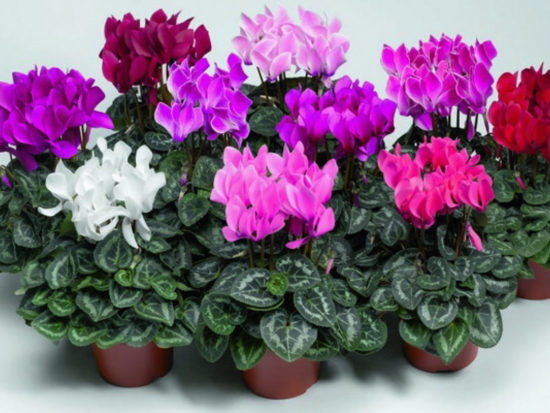
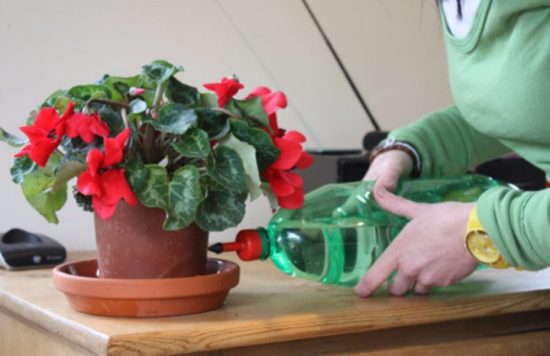

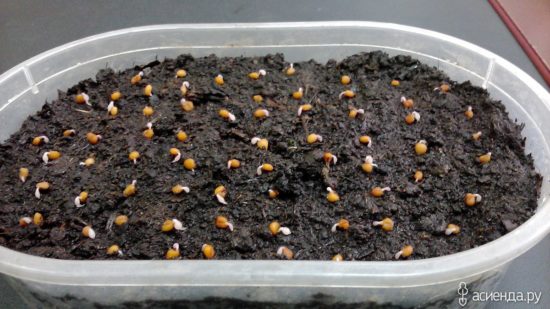
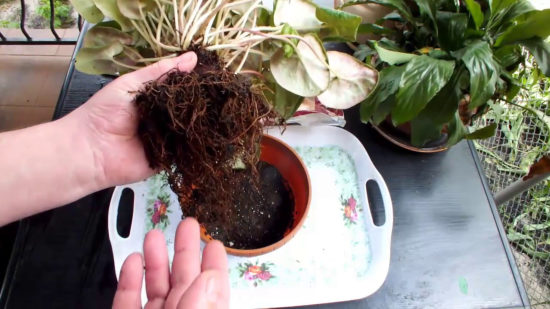
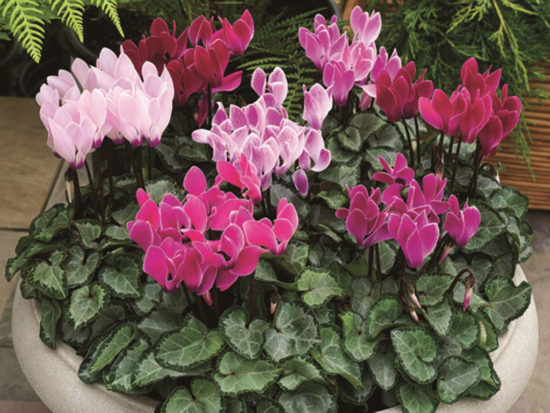
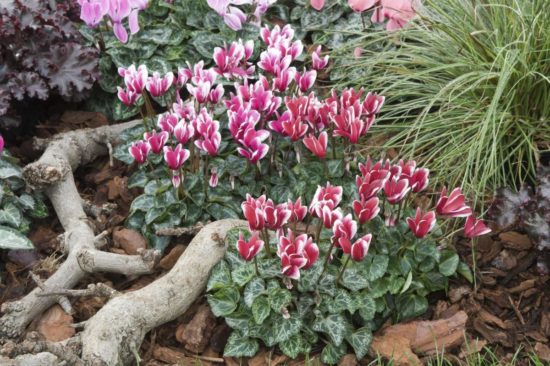
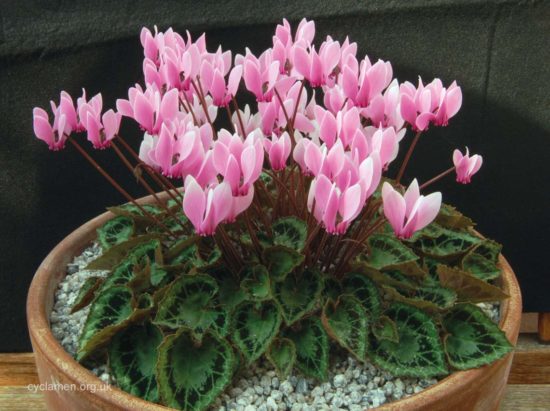
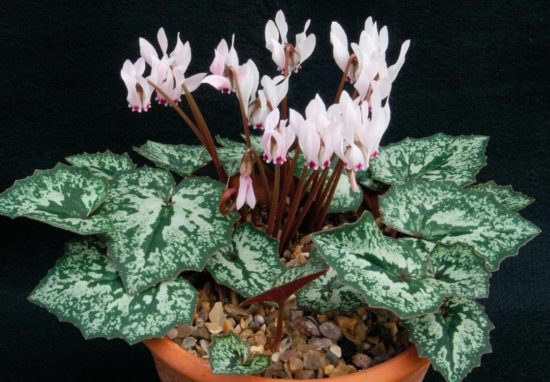
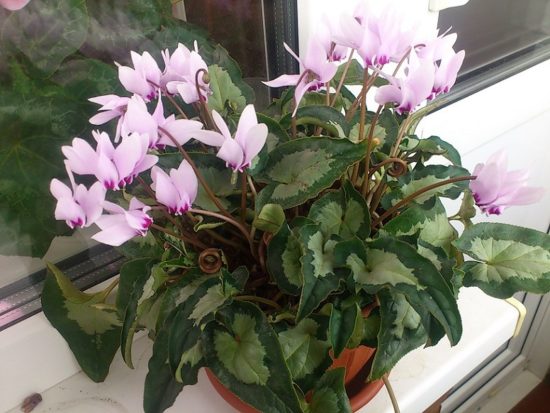

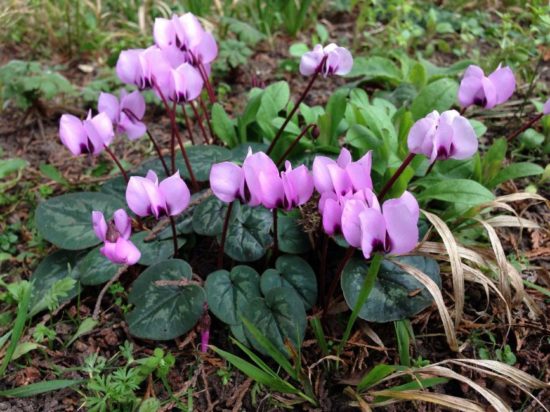
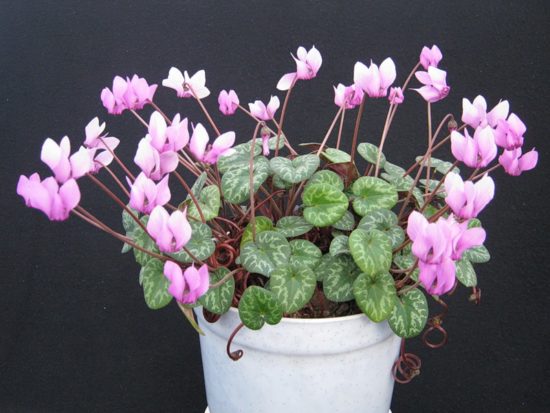
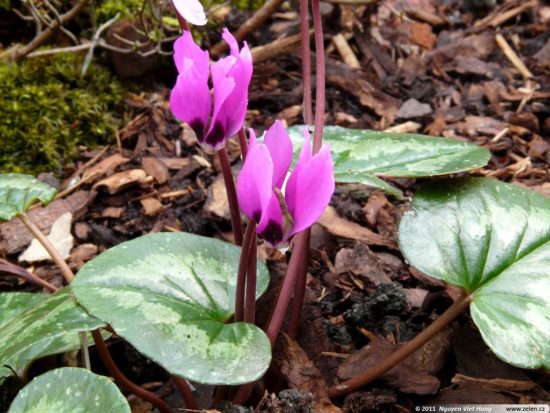
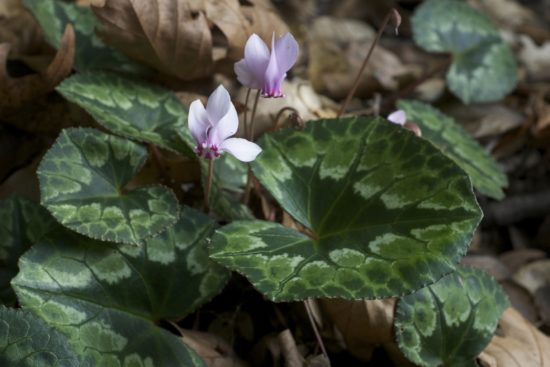

 CUCUMBERS NEVER GET SICK, I'VE BEEN USING ONLY THIS FOR 40 YEARS! I SHARE A SECRET WITH YOU, CUCUMBERS ARE LIKE THE PICTURE!
CUCUMBERS NEVER GET SICK, I'VE BEEN USING ONLY THIS FOR 40 YEARS! I SHARE A SECRET WITH YOU, CUCUMBERS ARE LIKE THE PICTURE! You can dig a bucket of potatoes from each bush. Do you think these are fairy tales? Watch the video
You can dig a bucket of potatoes from each bush. Do you think these are fairy tales? Watch the video
 How our fellow gardeners work in Korea. There is a lot to learn and just fun to watch.
How our fellow gardeners work in Korea. There is a lot to learn and just fun to watch. Eye trainer. The author claims that with daily viewing, vision is restored. They don't charge money for views.
Eye trainer. The author claims that with daily viewing, vision is restored. They don't charge money for views. A 3-ingredient cake recipe in 30 minutes is better than Napoleon. Simple and very tasty.
A 3-ingredient cake recipe in 30 minutes is better than Napoleon. Simple and very tasty. Therapeutic exercises for cervical osteochondrosis. A complete set of exercises.
Therapeutic exercises for cervical osteochondrosis. A complete set of exercises. Which indoor plants match your zodiac sign?
Which indoor plants match your zodiac sign? What about them? Excursion to German dachas.
What about them? Excursion to German dachas.
How many seeds can a cyclamen box contain?
Rita, the number of seeds may vary. Sometimes there may be only a few seeds in a box, but in this case they are large, or maybe 20-30, but then they are small.
My cyclamen is already 5 years old and not once during this time has it had a period of rest. At the end of winter and at the beginning of autumn, flowering stops for about a month, but all the leaves are green and even new ones grow.
On some Chinese website I saw an advertisement for the sale of yellow cyclamen. I really want to have a flower of this color, but I’m afraid it’s a scam. Has anyone heard of yellow cyclamens?
Victoria, there is a variety called Neo Golden Girl. It would be a stretch to call it yellow. Or rather, its color has a pale lemon tint, and pure yellow cyclamen have not yet been bred.
My cyclamen has been looking unhealthy lately. There are few flowers, the leaves are soft, although I water and feed it, I don’t notice any parasites on it, it’s not hot for it if it’s standing on the eastern window. I can't figure out what's wrong. Maybe someone has encountered such problems. I would be grateful for your advice.
Margot, perhaps your flower is just going through a dormant period